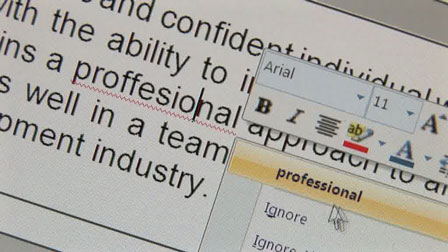Our Top Proof Reading Tips

Getting your copy mistake free essential for good communication, regardless of what you are writing, be it an article, a white paper, website content or client proposal.
Many people just do a spell check or grammar check and leave it at that but it is far from fool proof.
Here at Fingertips Typing Services we offer proof reading as a service, our team do this work day in, day out. So, we have put together our top tips on improving your proof reading ability:
- Tidy desk, Tidy mind – A lot can be said for having a clean and tidy desk space, mainly the fact that the less you have going on around you, the less likely you are to be distracted, so clean up your act!
- Concentrate – Sometimes this is easier said than done, but proof reading take s a lot of concentration so proof read when you are fresh. Get away from distractions and potential interruptions. If this means locking yourself away in a room, then so be it. Switch off your mobile phone, turn off the television or radio and most importantly stay away from your email and social media, which is one of the biggest time wasting activities out there!
- Schedule time – Proofreading is a specialist task, not something that can just be slotted into your day. Give it the time it needs to and deserve.
- Print out a hard copy – I am all for saving the planet, but people do read differently on screen and on paper. Try reading what you have written aloud as your ear might notice errors that your eye may have missed.
- Beware of the their, there, they’re – Otherwise known as Homonyms which are words that share the same spelling or pronunciation, but have different meanings.
- Double check your apostrophes – This is one of the biggest areas people fall down on, where should that little apostrophe go in a word. Misplacing an apostrophe can really hurt the credibility of your text. Never use an apostrophe to form a plural.
- Punctuation – This is where reading aloud comes in handy, it makes you focus on capitalised words, where commas and natural breaks in the text should be allowing your reader to pause and breath.
- Read it backwards – It may sound crazy, but looking at a word backwards will help you spot whether you have made a mistake, as your mind will automatically correct a mistake you have made.
- Get someone else to proofread It – Another person will have no preconceptions, so will spot things that you may have missed. They will also be in a good position to evaluate whether what you have written makes sense or not.
- Double check — once for technical accuracy, once for sense.
